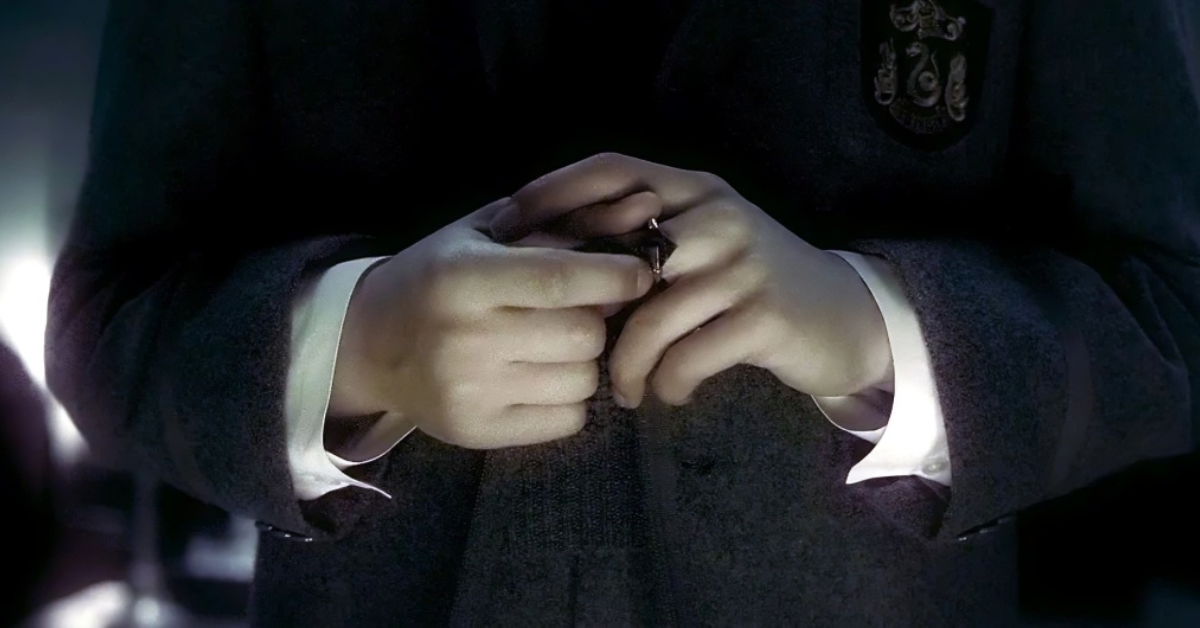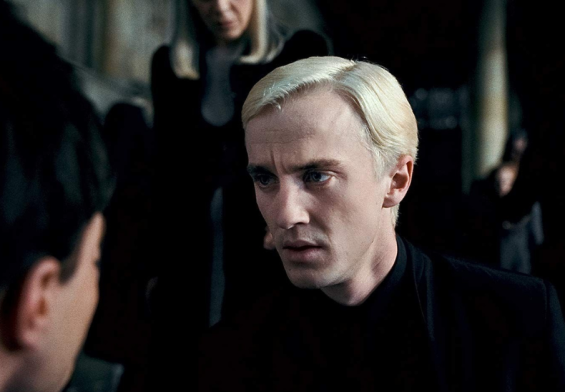
Of the various dark wizards that have stained Wizarding history, very few have been able to perform the most sadistic of magical rituals: Horcrux Creation. In fact, of the long list of dark wizards that have plagued the Wizarding World at large, only two or three names are known to have successfully created Horcruxes.
The most infamous and obvious name that comes to mind is Lord Voldemort, who created more Horcruxes than anyone else in wizarding history. The next name that comes to mind is Owle Bullock, a wizard who I just recently wrote article on.
In that blog post, I theorized that Owle Bullock, who authored “Secrets of the Darkest Art,” a book containing any and all information about Horcruxes, was actually the original Horcrux creator.
And the final and confirmed Horcrux creator was a wizard by the name of Herpo the Foul, a powerful ancient wizard that hailed from Greece.
But one thing I’ve never really gotten into is what happened to the Horcruxes of those other Horcrux creators. Voldemort’s Horcruxes were destroyed; we know that much.
But what about Herpo? If a Horcrux makes you immortal and anchors you to the world of the living, then it could mean that somewhere out there, Herpo the Foul still exists.
You guys have been asking for it, so here it is. Today, we’re going to be diving into what Herpo the Foul’s Horcrux is, where it is, and whether or not Herpo, one of the most powerful practitioners of dark magic to ever live, is still out there. Let’s dive in.
Herpo the Foul was an ancient dark wizard that hailed from Greece. We don’t have an exact date as to when Herpo walked the earth, but we do know that it was a long, long time ago, as he is commonly referred to as one of the earliest known dark wizards.
It was a time when magic was not new but being pushed more than ever in terms of its limits, particularly on the darker side of the spectrum. This is largely in part due to the ongoing wizarding-muggle conflict, where witches and wizards were being demonized and hunted by the Muggle population.
Many witches and wizards were forced to hide, to retreat, taking the moral high ground by not retaliating and potentially making the situation more dire. However, some witches and wizards, like Herpo the Foul, used this era to practice the worst kinds of dark arts imaginable, all in the name of retribution.
Where a morally good magical practitioner in this time may have practiced something like a concealment charm in hopes of better hiding the wizarding population, his evil counterpart would likely spend his efforts trying to produce a spell that could eradicate Muggles.
Herpo devoted his life to producing and creating some of the worst kinds of magic imaginable.
Similar to the story of Isolt Sayre, the possible father of Dementors, who solitarily dabbled in black magic on the remote island of Aaban in the 16th century, Herpo’s affinity for snakes led to his creation of the very first basilisk, a beast that has since become a symbol of terror in Wizarding folklore.
But basilisk creation is not where Herpo stopped, as for years he continually pushed the boundaries of magic. Eventually, Herpo was successful in producing one of the darkest forms of magic imaginable: a Horcrux.
But here’s the thing: knowledge of Horcruxes in the Wizarding World is pretty minimal, including how to destroy them, which means that if Herpo did create a Horcrux, it’s very likely that he’s still alive out there somewhere, lurking in the shadows. With that said, I’ve got a few theories for what Herpo’s Horcrux could be.
Recommended for You:- The TRUTH About Hagrid’s Parents REVEALED
- Why Were the Weasleys So Poor? The True Story Behind Their Struggles
Theory Number One: The Basilisk
The first recorded basilisk was bred by Herpo the Foul, a Greek dark wizard and Parselmouth, who discovered after much experimentation that a chicken egg hatched beneath a toad would produce a gigantic serpent possessed of extraordinarily dangerous powers.
One of Herpo the Foul’s crowning achievements in his long career of producing dark magic was his creation of the fabled basilisk, a powerful serpentine creature that would strike fear into the hearts of even the bravest witches and wizards.
Because of this, the basilisk held a special place in Herpo’s heart, which is why I suspect he may have wanted to connect his own life to his most powerful creation.
The basilisk may have even been a good choice for a Horcrux. While not particularly under the radar, the basilisk was powerful enough to keep people away, effectively safeguarding the piece of Herpo’s soul within it. It also would have been incredibly difficult to destroy.
But here’s where it gets really interesting. While it’s entirely possible that Herpo’s Horcrux was simply a basilisk that we’ve never encountered or heard of, I suspect that his Horcrux is closer to us than we could have ever imagined.
I think that Herpo’s basilisk and Horcrux is the very same basilisk that existed within the Chamber of Secrets.
The basilisk within the Chamber of Secrets is widely credited as having been created by Hogwarts founder Salazar Slytherin. However, there are a few connections between the two dark wizards that could suggest this is the very same basilisk.
The first clue is that Herpo the Foul is widely credited as the original Parselmouth, one who possesses the ability to speak to snakes. Speaking Parseltongue is a hereditary trait, meaning that the ability is passed down through generations within a family.
Since Herpo the Foul is recognized as the original Parselmouth, I think that it’s possible that Herpo was Salazar Slytherin’s ancestor. If Herpo was the ancestor of Salazar, it would also make him the ancestor of Voldemort.
Therefore, I suspect that the Slytherin family’s deep-rooted obsession with snakes and snake iconography can be traced back to Herpo the Foul.
The symbolic connection between snakes and dark magic established by Herpo could have laid the foundation for the Slytherin family’s fascination with serpents, leading to the adoption of snake imagery in their names, emblems, and magical practices.
If all of this is true, it’s possible that Voldemort drew inspiration from his ancestor when he decided to turn another snake, Nagini, into a Horcrux of his own.
The legend surrounding the basilisk in the Chamber of Secrets is that it can only be commanded by the true heir of Salazar Slytherin, a Parselmouth who possesses the ability to speak to snakes like their ancestor.
But I think that it started earlier than that, and that the power of the basilisk stems from its original creator, Herpo the Foul.
The horrible irony of all of this, however, is that one of the only known substances capable of destroying a Horcrux is basilisk venom. In a cruel twist of fate, the very creature that served as a vessel for dark magic and immortality could also be its undoing.
Basilisk venom, known for its exceptionally potent and destructive properties, is one of the few substances that can effectively annihilate a Horcrux, severing the anchoring piece of a wizard’s soul and rendering them mortal once again.
This adds another layer of complexity to the intertwined histories of the Slytherin family, Herpo the Foul, and the basilisk itself. The basilisk, once a symbol of power and protection for dark wizards seeking immortality through Horcrux creation, becomes a double-edged sword that can ultimately bring about their downfall.
The cyclical nature of magic, with its intertwining of creation and destruction, life and death, is exemplified in the relationship between the basilisk, Horcruxes, and the dark wizards who sought to manipulate these forces for their own ends.
In the end, this connection between the basilisk and Horcruxes serves as a cautionary tale about the consequences of dabbling in forbidden magic and the ultimate price that one must pay for seeking eternal life through dark means.
Theory Two: The Opal Necklace
An object you may have forgotten entirely, the opal necklace is first brought to our attention quite early on in the books, with its role not becoming clear until much later on. We first see the necklace when Harry mistakenly enters Borgin and Burkes in the year 1992.
The sinister necklace was on display in the unusual shop, complete with a warning label: “Do not touch. Cursed. Has claimed the lives of 19 Muggle owners to date.” After that, the necklace isn’t discussed or seen again, that is, until “The Half-Blood Prince,” when Katie Bell finds herself being afflicted by the necklace’s horrible dark curse:
At once, Katie rose into the air gracefully, her arms outstretched as though she was about to fly. Yet there was something wrong, something eerie. Her hair whipped her by the fierce wind, but her eyes were closed and her face was quite empty of expression. Then, six feet above the ground, Katie let out a terrible scream. Her eyes flew open, but whatever she could see, or whatever she was feeling, was clearly causing her terrible anguish.
And I don’t know about you guys, but when I first read about the evil dark curse placed on the necklace, I immediately began to consider that it was very Horcrux-like.
The curse placed on the necklace and the way that it spreads reminds me a lot of the ring Horcrux and the curse that subsequently afflicted Dumbledore:
She appears to have brushed the necklace with the smallest possible amount of skin. There was a tiny hole in her glove. Had she put it on, had she even held it in her ungloved hand, she would have died, perhaps instantly.
The opal necklace is clearly an old, ancient dark magical artifact, and given its questionable history and the fact that you can’t directly handle it, I’m sure someone has tried to destroy it at one point or another.
Its existence in “The Half-Blood Prince,” however, is certainly a testament to its resilience, and I think that its durability may be one of the reasons that point to it being a Horcrux.
But one question remains: why an opal necklace? I think that clue lies in Herpo’s heritage. You see, opals were symbolic to the ancient Greeks. The ancient Greeks called opals “opalos,” which means “to see a change in color.”
They revered opals as symbols of hope, love, and purity, believing that the gemstone’s captivating play of colors reflected the beauty and wonders of the world. It was also believed that wearing opal could bring good fortune, protect against evil, and strengthen relationships.
Given that opals were regarded in Greek mythology as symbols of these things, it’s possible that Herpo the Foul’s selection of an opal necklace as a Horcrux reflects his twisted interpretation of these positive qualities.
By perverting the symbolism associated with opals, Herpo may have sought to imbue his Horcrux with layers of complexity and contradiction, in line with his dark and malevolent intentions.
Furthermore, the mythical associations of opals in Greek culture, including stories of battles among gods and mythical beings, could add another dimension to the significance of the opal necklace as a Horcrux.
Just as the opal’s play of colors reflected the beauty and wonders of the world to the ancient Greeks, Herpo the Foul’s choice of opal could symbolize his desire for power, immortality, and control over life and death.
And that’s it for this blog post. What do you think? Do either of these options seem plausible as Herpo the Foul’s Horcrux? Do you think that he’s still out there? Let me know down in the comment section below.
Until next time, remember: it does not do to dwell on dreams and forget to live.



